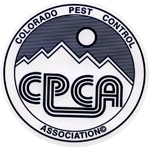Animal Exclusion Tips

All of us, at one time or another, are probably going to experience the excitement of a visit from local urban wildlife. And although such experiences are wonderful and quite memorable, sometimes they can also be problematic. Below are some Tips for Dealing with Urban Wildlife. If, after reading these tips, you still have comments, questions, or concerns, please Contact Us.
Cap Chimneys
All chimneys should be capped to prevent entry by wild birds and mammals. The average cost of capping a chimney is far less than the average cost of removing trapped wildlife. Chimney caps also prevent sparks from leaving the chimney, and are therefore a safety device as well.
Urban wildlife have set up housekeeping. What to do.
Don't panic. Try thinking and planning. Wild animals are not really smarter than we are. It just seems that way. Look to see how many raccoons, opossums, squirrels, etc there are and where their den is and where they got in. What hours do they keep as they go about their daily and nightly affairs. Is the intruder a mother with babies? Exclusion techniques should not be implemented until you are absolutely certain that ALL ANIMALS are out of the space to be blocked off. If young are present, please wait until they are old enough for their mother to walk them out and then secure the entry points. Otherwise, the young will starve and you will have other unpleasant problems to solve. The babies begin to go out with mom in a few to several weeks.
When not to live trap.
Most species of native wildlife have their young from early spring (March) to early fall (September- October). During this period there may be babies who are entirely dependent upon their mother for food and protection. Any action that prevents the mother from caring for her young will result in suffering for her and a slow death for the babies. Since the family will not stay forever, or even for a very long time (a month or two, perhaps less), it is better to wait until the family vacates in the early fall, and then take action that will prevent the same thing from happening again. Be aware that live trapping and relocating any wild animal only creates a vacancy for more to move in. Exclusion methods and some degree of tolerance are ultimately more successful and lasting.
Attics and crawl spaces.
If a wild animal has gained entrance to a crawl space or attic, close all but one point of entry. To determine which hole is being used as a point of entry or exit, cover all holes with a piece of plastic or stuff a rag or ball of paper into it. If it is gone the next day, the hole is being used. To encourage mammals to leave on their own, leave a repellent in the form of ammonia bags (cloth bags filled with ammonia-soaked rags) or place a radio in the space with the dial turned to a rock station at high volume. You can also try shinning a bright light into their home.
What you can do to prevent problems from occurring.
The two most effective and humane solutions are to secure your garbage so that you do not attract and feed wildlife and to secure your home so they cannot find convenient shelter. Garbage cans are to bears, raccoons and opossums what bird feeders are to cardinals and doves.
How to secure your home.
It is natural for wildlife to seek shelter. Caves, hollow logs, and large abandoned bird's nests suffice in the wild, but in the city the substitutes are attics, crawl spaces or chimneys for the same purpose. Animals are intelligent, but they should not be expected to know that they are "trespassing." After securing these areas, pay close attention during the day as well as at night, for any sounds of scratching or whining. This would indicate that an animal has been trapped inside and you will need to immediately give the animal an exit.
Check your home.
Check porches, decks, sheds and garages for holes or weak areas and securely seal them off. Regularly check the roof and eaves and block all holes using galvanized sheet metal. On open vents, use rustproof screening. Make sure there are no animals living inside at the time. Keep garage and shed doors shut at night. If an animal goes into a garage or shed, simply leave the door open for a few hours after dark and he or she will leave.
Trim branches.
Raccoons and other wildlife may gain entry to your roof via trees or branches that extend to your roof or slightly above it, remember they can jump short distances. keep larger branches trimmed so they do not come within reach of your house.
Install bright yard lights.
Use a minimum of a 100-watt bulb for every 15 square yards of yard space to discourage nocturnal animals.
Living with urban wildlife.
Wild animals explore, sniff, and climb about in a variety of places, from remote forest and desert habitat to the noisy, flashing, hard-edged confines of bustling cities. They are opportunists who may dine on such natural fare as frogs, crayfish, rats, mice, roaches, birds' eggs and wild fruit. But they are also content to enjoy a delectable dinner scrounged from the rich variety of garbage found in city and suburban settings. In fact, the city is not Garden of Eden for
wild animals. Their natural desire to dine upon what is available and to take up housing that, at first look and sniff, may seem quite suitable, can earn them the wrath of humans who unintentionally provide the food and housing in the first place. Wildlife can't cause problems unless people allow them to do so. Instead of blaming them we should work together to find solutions satisfactory to both humans and wildlife.


